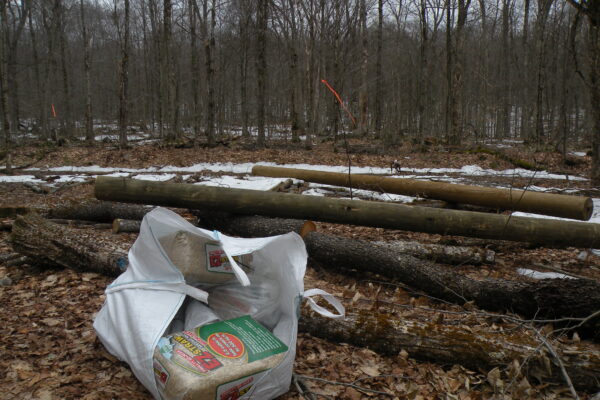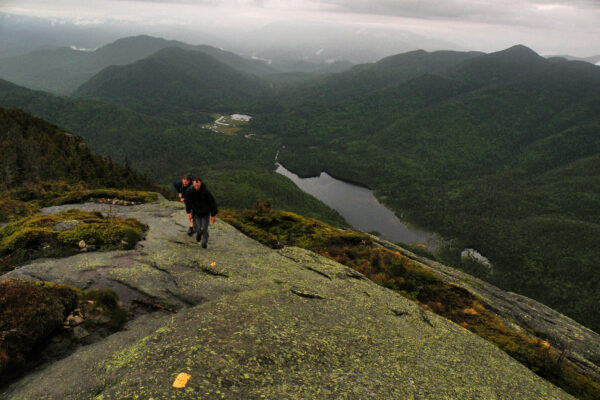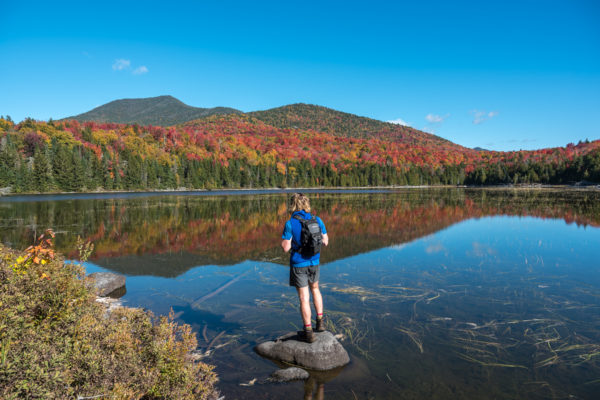This proposal is a companion piece to the Adirondack Wilderness Advocates’ proposal for a true Wilderness classification for the Boreas Ponds Tract with Gulf Brook Road closed at the gate. To maximize this incredible opportunity to realize a greatly expanded High Peaks Wilderness, which will draw Wilderness lovers from around the world, Adirondack Wilderness Advocates (AWA) strongly urges the creation of a High Peaks Wilderness Gateway facility at the location of the Old Frontier Town at I-87 exit 29.
Consider for a moment of the High Peaks traffic that both Lake Placid and the Keene Valley get. Think of the drive it takes to get to any of those trailheads from outside of the Park. Now imagine a “High Peaks Wilderness Gateway” facility right at Exit 29 on the Northway. This is the exit in North Hudson for Blue Ridge Road, which goes west towards Newcomb and provides access to the Boreas Pond Tract. It is also the location of the former Frontier Town, a large, abandoned property which is mostly owned by Essex County. It’s a perfect location for a comprehensive tourist facility. The usage numbers for trailheads at Adirondack Loj, Keene and Keene Valley show the potential of a lot of traffic for a more accessible, convenient access center.
So what would such a Gateway facility look like?
Visitors driving the Northway would see signage directing them to this new, primary access point for the High Peaks Wilderness. Mere seconds from the exit ramp they would find a broad collection of amenities, along with ample parking and access to the community connector trail.
A High Peaks Wilderness Welcome Center would be sponsored by the major environmental groups in the Park. It would have information and displays on the environmental, recreational, cultural and historical assets of the High Peaks Wilderness and the Adirondack Park.
An outing planning service would be available to help visitors make the most of their desire to explore the High Peaks Wilderness. Educational materials would provide a wealth of information on different topics including safety, back country etiquette, how to help protect the Park, local communities and regional history. Much like with National Parks, this Welcome Center would present the High Peaks area as the grand wilderness it is, thus catering to the increasingly diverse population that seeks wilderness adventure.
Amenities for visitors would include a gas station (already there), restaurant, motel, outfitter, and guide service. All of these businesses would share a “High Peaks Wilderness” identity and theme. The outfitter and guide service would be resources for the Welcome Center’s outing planning service.
The heart of the High Peaks Wilderness Gateway would be state-of-the-art transportation network that would support green travel, eco-tourism, guided trips, historical destinations and every kind of recreational activity there is. Electric shuttle buses would run a regular route schedule of along the Blue Ridge Road to:
- Boreas Ponds Tract trail heads, featuring both short hikes, the Ponds and access to the High Peaks
- Tahawus and Upper Works, where the Adirondac Historic district would be featured as never before
- The Essex Chain for paddling and bicycling
- Santanoni, an historic and ideal eco-tourist destination
- SUNY ESF Adirondack Interpretive Center and Goodnow Mountain, with world-class educational offerings and a climb to a firetower with a great view.
Electric Vehicle (EV) charging stations would keep the shuttle buses operating but also be available to visitors with plug-in vehicles. Last but not least, a fleet of self-driving electric cars would be available for rent with a few taps of a smart phone, at a cost far less than a traditional rental car, to take visitors to any destination within a hundred miles. This would be a crucial asset, since the geographical size and population density in the Park will never allow any kind of traditional mass transit to be feasible.
This kind of transportation network will be feasible in the next decade, with all but the self-driving cars practically doable now, and at considerably less cost than most people realize.
This proposal fits ideally with modern demographics and evolving travel trends. It fits perfectly with the desire for people to experience true Wilderness but from a base of operations that offers what they need. It promises a level of convenience unprecedented in the Park. It offers a rich economic opportunity for North Hudson, Newcomb and Minerva.
A variety of Federal and State funding is available for projects like this. A preliminary budget for a feasibility study and funding assessment should be developed. AWA proposes a partnership between local government and environmental organizations to do this study.



